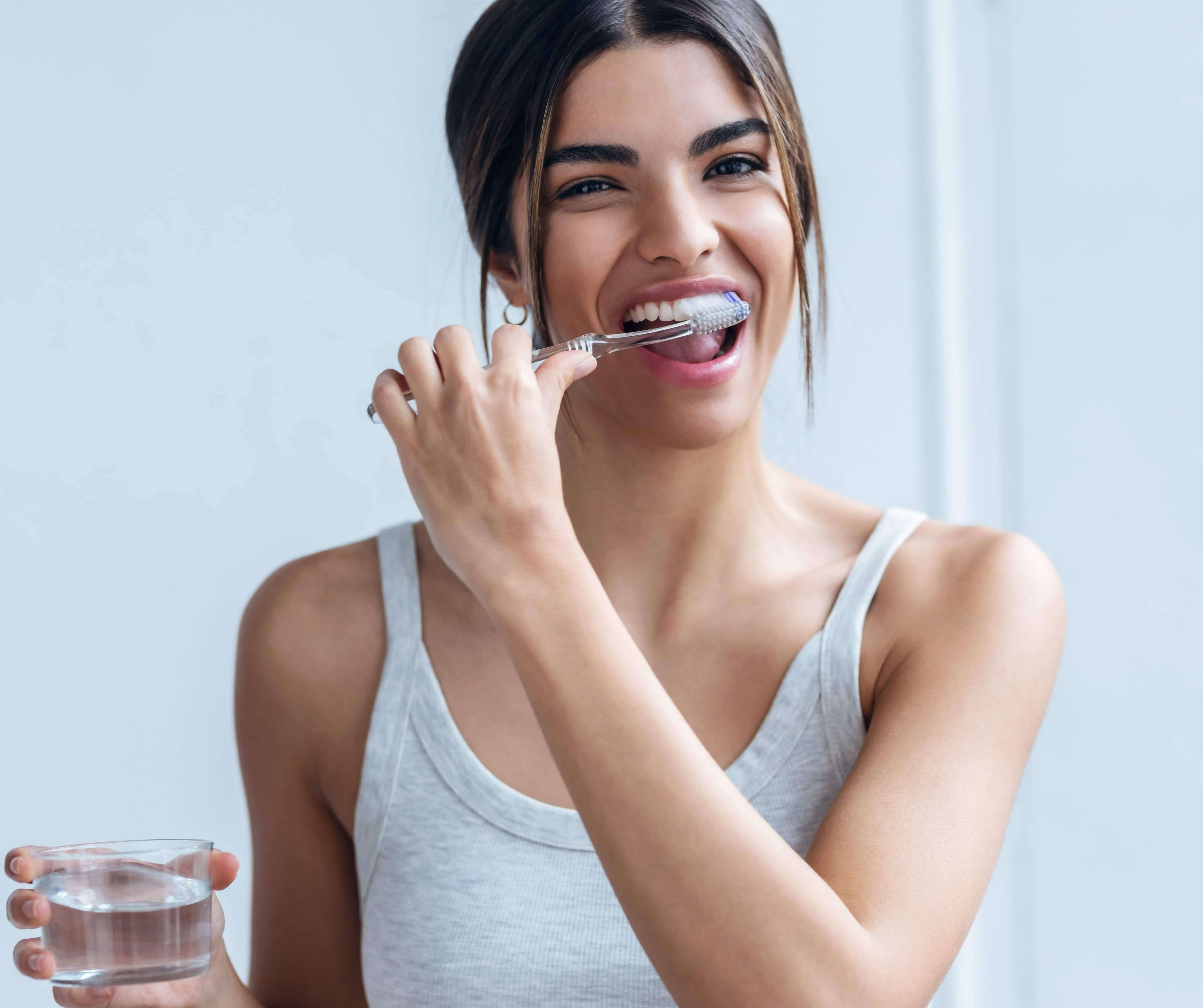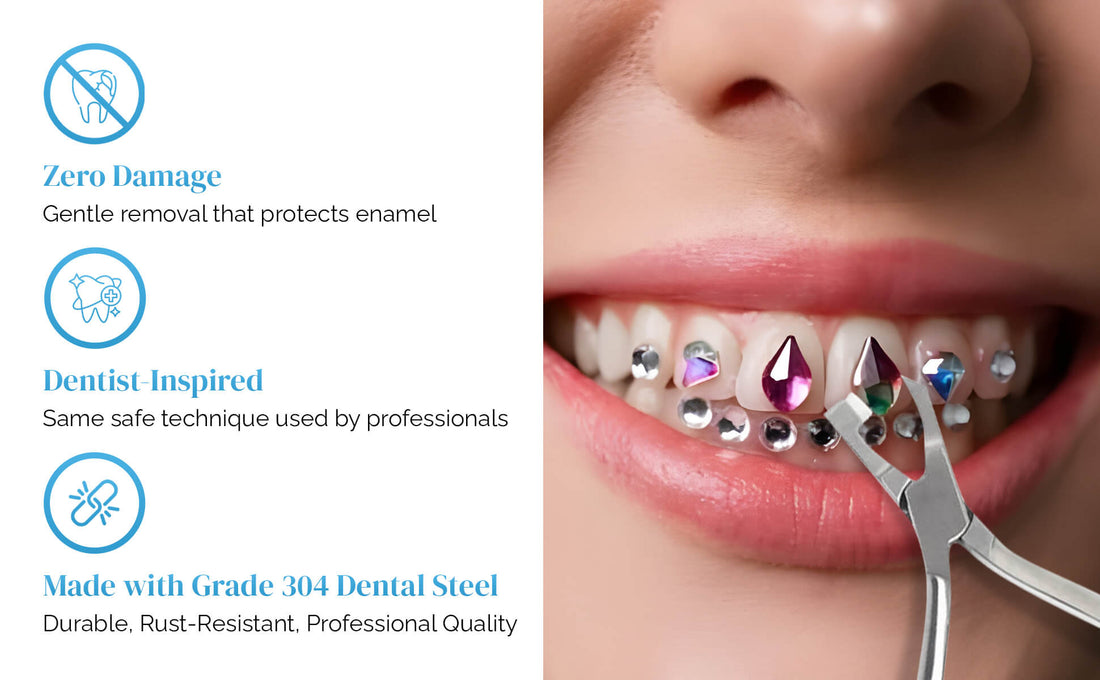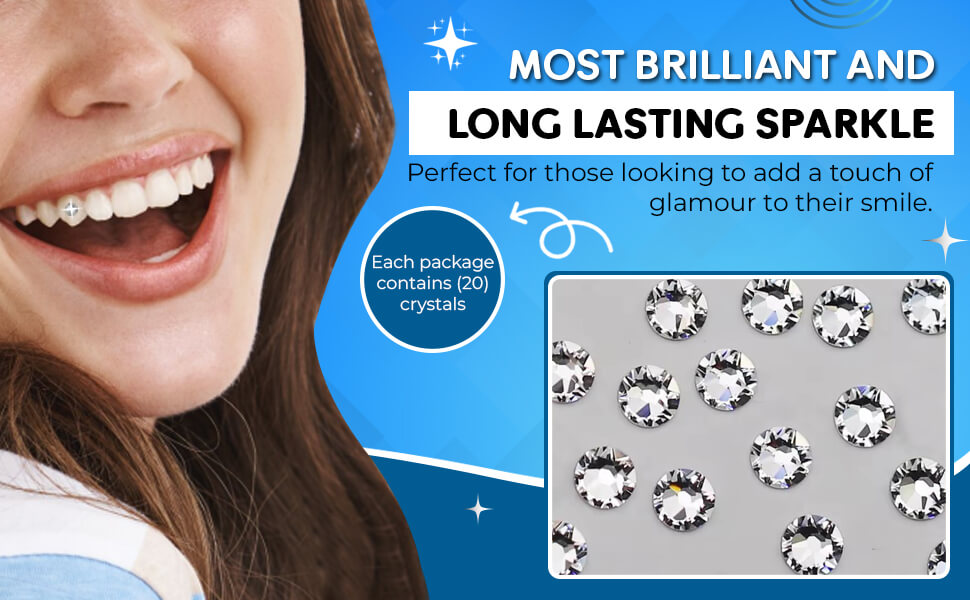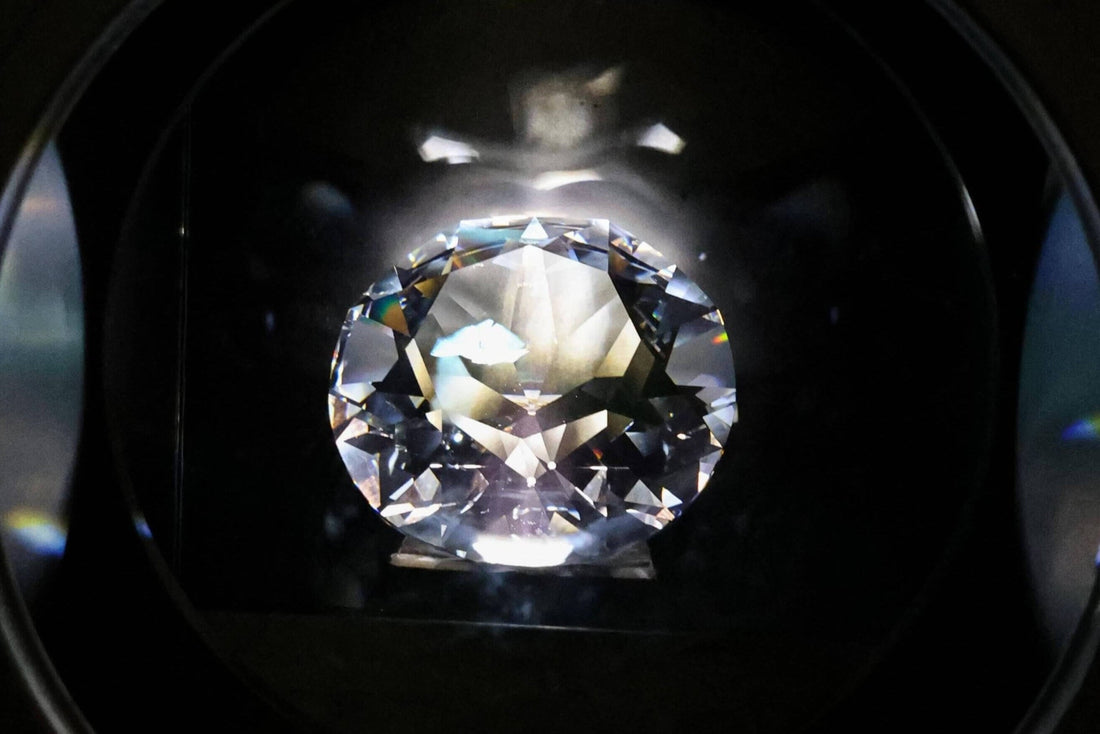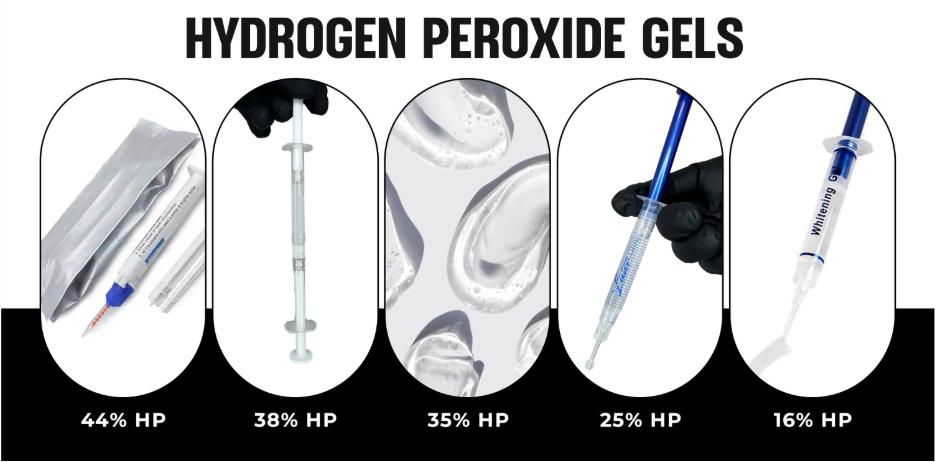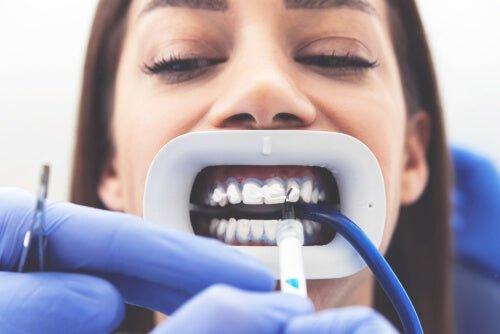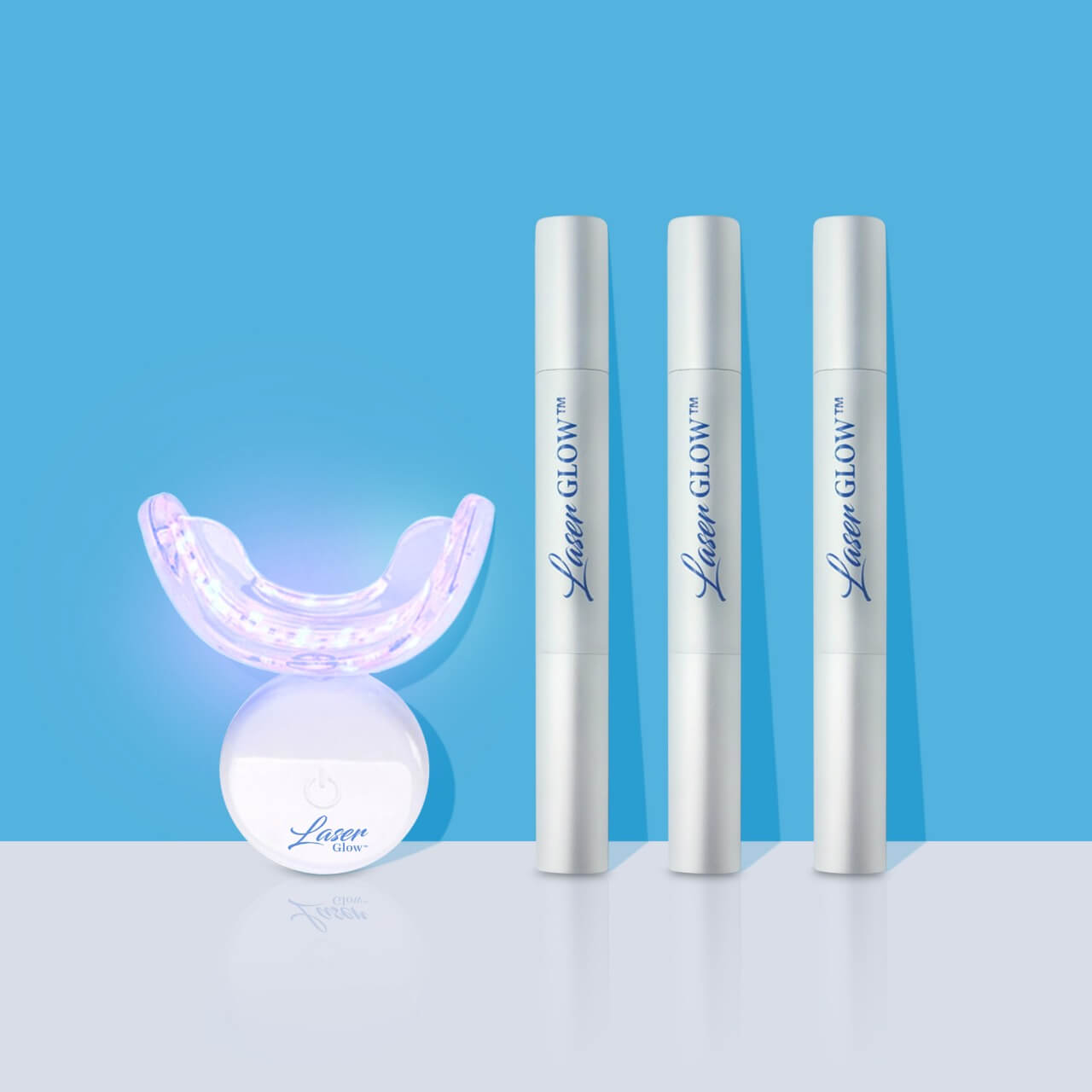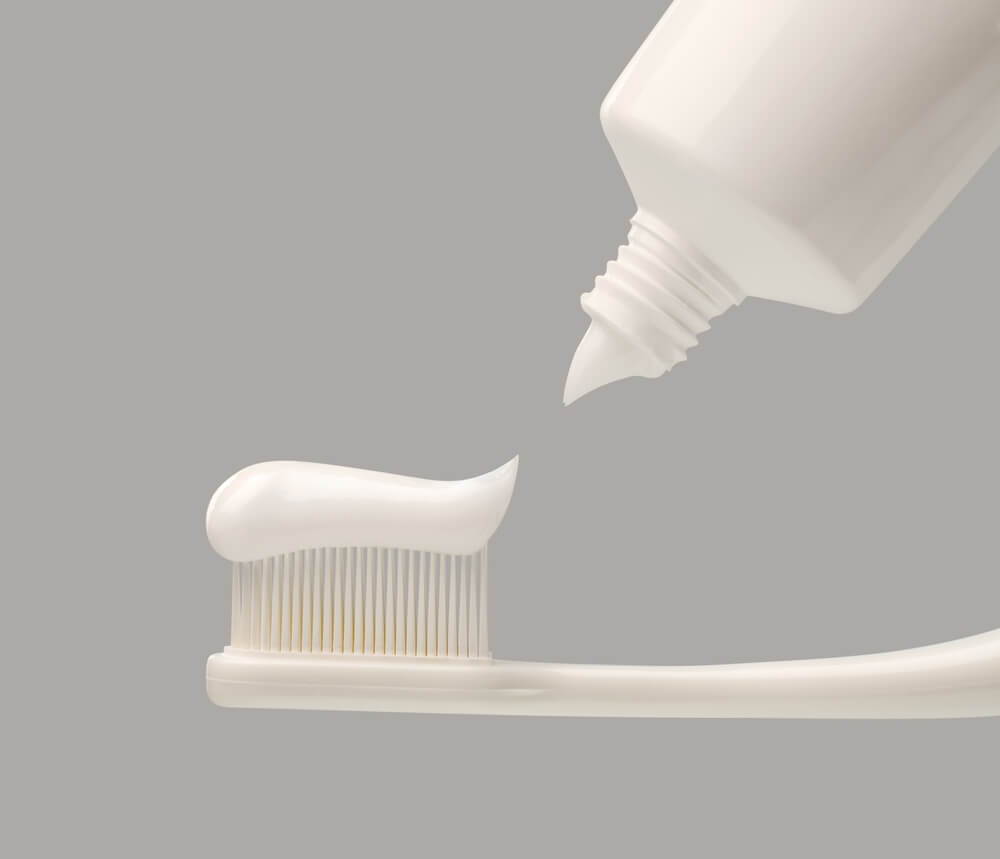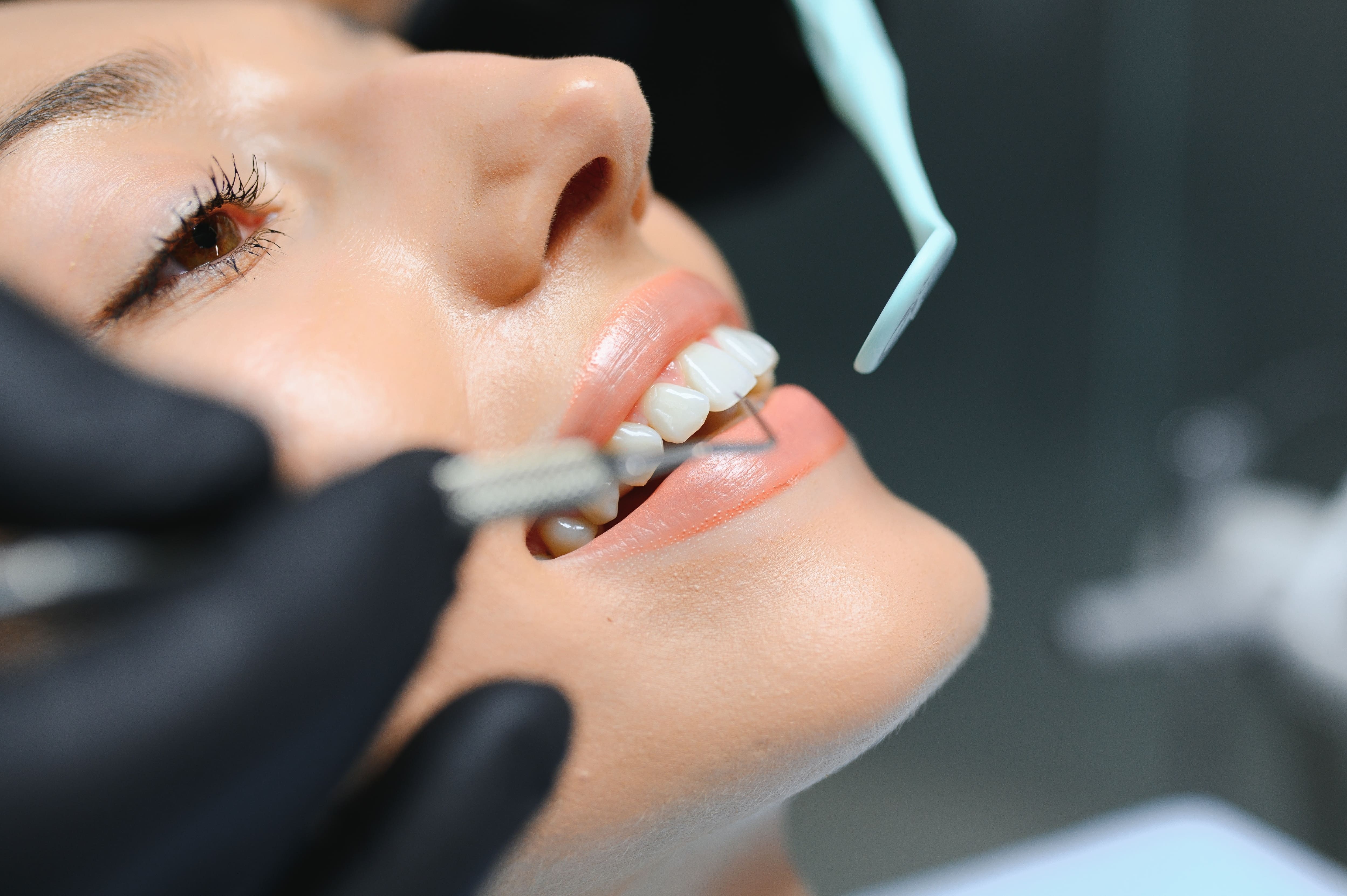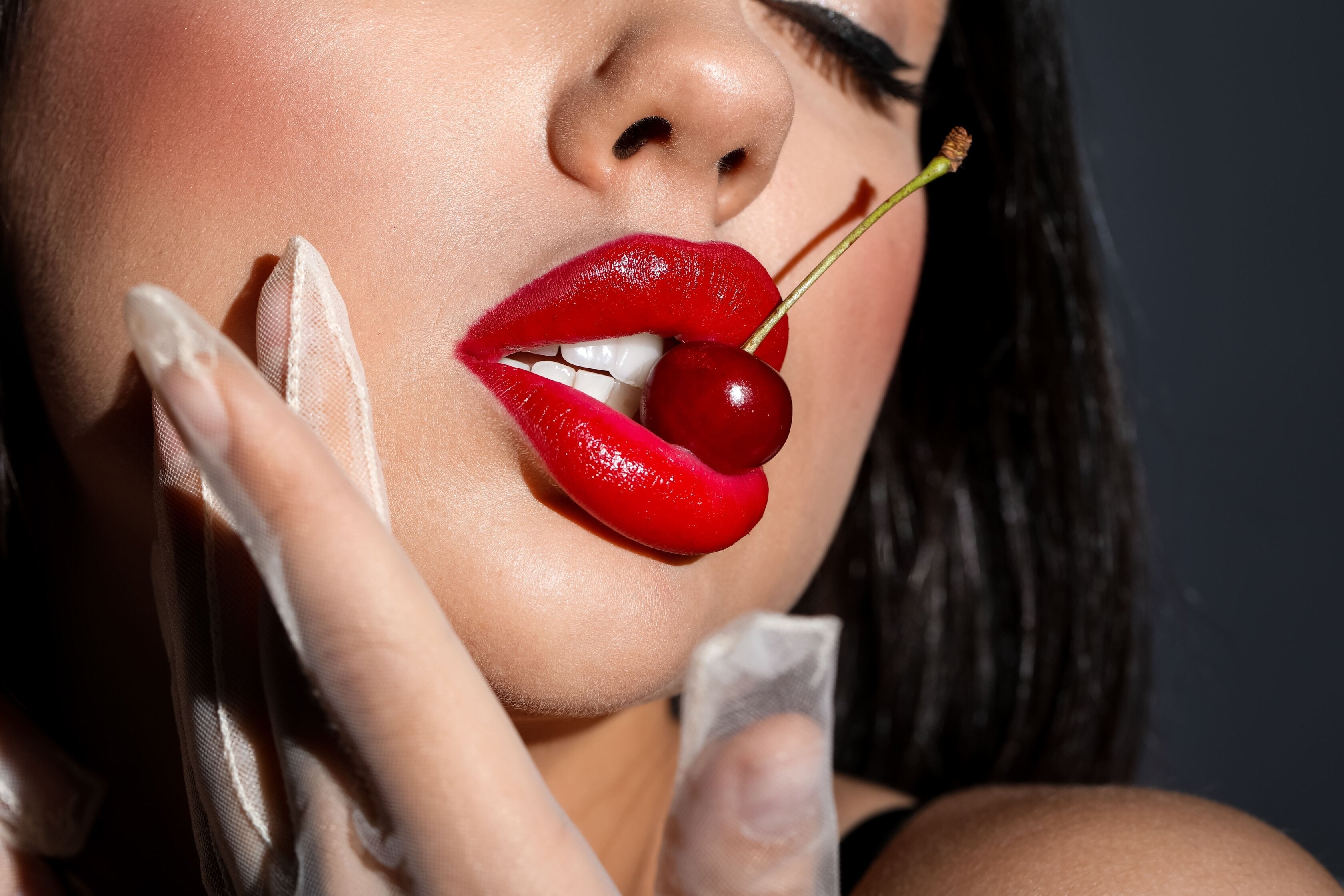When you finally achieve a dazzling white smile, it can be frustrating to see those teeth whitening results fade over time. Unfortunately, teeth whitening is not permanent – the bright gleam will gradually diminish as months go by. In fact, most whitening effects last only a few months up to a couple of years without maintenance. The good news is that understanding why whitening fades can help you take action to keep your smile shining. Here we’ll explore the top 5 reasons your teeth whitening results might fade and how to maximize your results for a longer-lasting bright smile.
1. Stain-Causing Foods and Drinks
Our daily diet is one of the biggest culprits behind fading whitening results. Common beverages and foods like coffee, tea, red wine, dark sodas, berries, and soy sauce are packed with dark pigments that cling to tooth enamel and cause stains over time. These chromogenic (color-producing) compounds easily deposit onto your teeth, gradually dulling the whiteness you achieved.
This effect is especially pronounced right after a whitening treatment, when your enamel can be slightly more porous and vulnerable to absorbing pigments. For example, if you sip a cup of coffee or eat a bowl of berries in the days following your whitening, you may notice yellowing creeping back faster than expected. The enamel’s temporarily porous surface allows stains to penetrate more readily.
How to maximize results: You don’t have to give up your morning coffee or favorite foods entirely, but a few habits can minimize staining:
- Rinse or drink water after consuming any staining drink/food to wash away residue before it sets on enamel. Staying well-hydrated helps wash away pigments and keep your mouth clean throughout the day.
- Use a straw for beverages like iced coffee, tea, or cola. Sipping through a straw directs the liquid past your front teeth, limiting contact and reducing stains on your visible smile.
- Limit high-stain treats in the first 24–48 hours after whitening, when teeth are most susceptible. Dentists often recommend avoiding things like red wine, curry, or tobacco immediately post-whitening for this reason.
- Try a purple toothpaste for color correction. A purple-tinted whitening toothpaste can counteract yellow tones on your teeth by using color theory – purple is opposite yellow on the color wheel, so it neutralizes yellow or brownish stains and makes teeth appear whiter. For example, our Purple Toothpaste is formulated with special purple pigments to visibly diminish yellow discoloration from coffee or wine, giving you an instant brightness boost between whitening sessions. (Keep in mind purple paste effects are optical and temporary, but they’re a handy touch-up strategy.)
By being mindful with staining foods and using tools like a purple color-correcting toothpaste, you can slow down how quickly dark pigments dull your whitened teeth.
2. Smoking and Vaping
If you’re a smoker or use vaping products, these habits can quickly undo your whitening results. Tobacco in any form is notorious for staining teeth. Nicotine and tar from cigarettes, cigars, or vape liquids create yellow-brown stains that cling stubbornly to enamel. These tarry deposits penetrate into the tooth surface and are difficult to remove with normal brushing. As a result, smokers often see their freshly whitened teeth reverting to a dingy color faster than non-smokers.
Vaping is sometimes thought to be “cleaner,” but e-cigarette vapor usually contains nicotine and other chemicals that can still cause yellowing. Over time, tobacco stains can even become intrinsic (seeping into deeper layers of the tooth), making them even harder to bleach out. This means that without changes, a smoker’s whitening results may fade very quickly, sometimes in a matter of weeks.
How to maximize results: The ideal solution is to quit smoking or vaping, both for your smile and overall health. But if quitting isn’t immediate, consider these tips:
- Cut down and clean up: Reduce the number of cigarettes or sessions, and rinse your mouth with water after smoking or vaping. This can help remove some residue before it settles on teeth. Brushing your teeth or at least drinking water after using tobacco can prevent stains from building up as heavily.
- More frequent touch-ups: Smokers may need whitening maintenance more often to combat ongoing stains. You might use whitening strips or an LED whitening kit more regularly than someone who doesn’t use tobacco. For instance, applying whitening strips periodically (such as one day every few weeks) can lift newly formed stains from smoking before they become deeply embedded.
- Consider a protective polish: Ask your dentist if there are professional coatings or sealants that help resist stains. Some cosmetic dentists offer stain-resistant clear coatings after whitening. While not common, it’s worth inquiring if heavy smoking is undoing your whitening quickly.
- Oral hygiene is key: Meticulous brushing and flossing is extra important for tobacco users. Plaque (the sticky film on teeth) readily absorbs tobacco tars, so keeping your teeth plaque-free will reduce how much smoke can discolor them. We’ll talk more about hygiene in the next section.
- Remember, every whitening will fade with continued tobacco use, so the goal is to slow the staining process. Cutting back and cleaning often, plus doing touch-ups, will help your smile stay brighter longer than if no maintenance is done.
3. Poor Oral Hygiene Habits
Whitening your teeth is not a one-and-done miracle – you need to maintain them. If you don’t brush and floss diligently, you allow plaque and debris to accumulate on your teeth. That dull film not only makes teeth look less shiny, but it also traps pigments and bacteria that cause discoloration. In other words, even if your enamel is still white underneath, a layer of plaque can make your smile appear yellow or dingy.
According to the Cleveland Clinic, stains cling to dental plaque, so neglecting oral hygiene leads to more discoloration over time. If you got your teeth whitened but then slack off on daily brushing, those pearly whites will quickly lose their luster as new stains settle on the plaque. Tartar (hardened plaque) is even worse – it can appear yellowish or brown and cannot be removed by brushing alone.
How to maximize results: Maintaining excellent oral hygiene is one of the simplest, most effective ways to preserve whitening results:
- Brush thoroughly twice a day and floss daily. Regular brushing prevents plaque film from dulling your teeth. Use a fluoride toothpaste to protect enamel, and consider a gentle whitening toothpaste a few times a week to polish away surface stains (many whitening toothpastes contain mild abrasives or chemicals to help scrub off new stains). Just avoid very abrasive products that could scratch enamel.
- Upgrade your toothbrush or technique: If possible, use an electric toothbrush. Studies show electric brushes can remove significantly more plaque than manual brushing, which means fewer stains sticking around. At minimum, use a soft-bristled brush and replace it every 3 months so it cleans effectively.
- Incorporate a PAP+ whitening powder into your routine. One innovation in oral care is PAP+ teeth whitening powder, a peroxide-free powder you add on top of your toothpaste. PAP+ contains Phthalimidoperoxycaproic Acid (PAP), a safe peroxide alternative that gently breaks down stains without releasing harmful free radicals. Using a PAP+ powder daily can help lift everyday stains from coffee, tea, or plaque, preventing discoloration buildup while you brush. It’s also formulated with ingredients like hydroxyapatite to strengthen enamel as you whiten, so you can maintain brightness with zero sensitivity. This kind of product allows you to continuously remove minor stains before they accumulate, supplementing your whitening results on a daily basis.
- Rinse and chew gum: After meals or drinks, rinse your mouth with water to flush away sugars and pigments. You can also chew sugar-free gum (especially one with xylitol) between meals – chewing gum boosts saliva flow, which naturally neutralizes acids and cleanses your teeth of leftover food particles. A cleaner mouth means less chance for new stains to stick.
- Don’t skip professional cleanings: Even with good home care, you’ll eventually get some tartar or stubborn stains. See your dentist/hygienist for a thorough cleaning on schedule (typically every 6 months). A professional cleaning will polish away surface stains and tartar that you can’t remove at home, instantly brightening your smile. Many patients find their teeth look noticeably whiter after a good cleaning!
- By keeping your mouth clean and healthy, you preserve that brilliant white canvas. Think of it this way: whitening removes old stains; good hygiene prevents new stains. The two go hand-in-hand for long-term whitening success.
4. Acidic Foods and Enamel Erosion
It’s not just colored stains that can make your teeth look less white over time – acidic substances can play a sneaky role by eroding your enamel. Drinks and foods like citrus fruits, sodas (even clear or light-colored ones), sports drinks, vinegar, and acidic candies can wear away the outer enamel layer of your teeth with frequent exposure. When enamel thins or roughens from acid erosion, the yellowish dentin underneath becomes more visible, making teeth appear duller or more yellowed.
Acid erosion doesn’t cause staining per se, but it dulls your smile and makes future whitening less effective. After all, enamel is the whitest part of the tooth; dentin beneath is naturally darker and yellow. If you lose enamel, you’re effectively losing some of the “white.” Enamel that’s been weakened by acid is also more porous and can absorb pigments more easily. So an avid soda drinker or someone who sucks on lemon wedges may notice their post-whitening brightness fading sooner, not just from new stains but from the enamel changing.
How to maximize results: You don’t have to cut out all acidic foods (many are healthy), but use moderation and timing to protect your enamel:
- Limit very acidic drinks and snacks. Be mindful of how often you sip soda or lemonade throughout the day. If you do indulge, try to finish the drink in one sitting rather than sipping continuously, which prolongs acid exposure.
- Rinse after acidic intake: Swish water around your mouth after consuming acidic things like orange juice or vinegar-based dressings. This helps neutralize acids. Chewing sugar-free gum can also stimulate saliva, which buffers acid.
- Wait to brush: Avoid brushing immediately after eating or drinking something acidic. Acid softens enamel, and brushing too soon can actually scrub away microscopic layers of that softened enamel. Instead, wait about 30 minutes before brushing to give your saliva time to re-harden your enamel.
- Use enamel-strengthening products: Make sure your toothpaste contains fluoride or consider an enamel repair toothpaste. Products with nano-hydroxyapatite (a form of the mineral that makes up enamel) can help remineralize and strengthen your teeth. For example, PAP+ whitening powder not only whitens but also includes hydroxyapatite to reinforce enamel. Strengthening your enamel will keep it more resistant to both acid erosion and staining.
- Moderation after whitening: Right after a whitening treatment, your teeth might be a bit dehydrated or sensitive. It’s wise to avoid very acidic foods and drinks for at least the first day or two post-whitening. This protects that freshly bleached enamel and prevents sensitivity flare-ups.
By protecting your enamel from erosion, you’ll maintain a thicker, whiter surface on your teeth. Healthy enamel is key to a bright smile – it’s no coincidence that as enamel wears down, teeth appear more yellow. So preserving your enamel through diet choices will directly help your whitening results last.
5. Time and Natural Aging
The sad truth is that nothing can stop time – and our teeth naturally tend to darken as we age. Even if you avoid coffee, cigarettes, and acidic soda, you’ll likely notice your teeth aren’t as paper-white at age 60 as they were at 20. Why? Because of gradual changes in the tooth’s structure:
- Enamel thins with age, simply from years of wear and tear (chewing, acidic foods, brushing friction). As the translucent enamel layer gets thinner, it exposes more of the layer beneath (dentin). Dentin is naturally yellowish in color. So your teeth take on more of that yellow tone as enamel diminishes.
- Meanwhile, dentin can thicken with age (the tooth lays down more dentin inside), which also makes the tooth look more yellow from the inside. Essentially, the internal color becomes more pronounced.
Because of these intrinsic factors, the brilliant white shade you achieved from whitening will gradually “relapse.” Whitening results fade over time as the natural aging process continues. This doesn’t mean your teeth will darken all the way back to their original pre-whitening shade immediately, but without periodic maintenance, they will trend back toward yellow. Many people notice some dulling of whiteness after about 6 months to a year even with good habits, simply due to time and genetics. In fact, some degree of color rebound is normal in the weeks following intensive whitening, as the teeth rehydrate and recover.
How to maximize results: You obviously can’t stop aging, but you can continuously counteract its effect on your teeth:
- Schedule regular touch-ups. Think of teeth whitening as an ongoing process rather than a one-time event. To maintain the level of whiteness, plan on doing maintenance whitening treatments occasionally. This could mean using an at-home LED whitening kit or a set of whitening strips every few months, or getting a professional touch-up once a year, depending on what type of whitening you originally did. Dentists often provide custom whitening trays for at-home use so patients can periodically bleach their teeth and boost their brightness back up when they notice fading. Don’t wait years until your teeth are fully yellow again; small, regular “refresh” treatments will keep your smile consistently white.
- Use high-quality whitening products for maintenance. As teeth naturally re-yellow, using effective products can reverse that. Our LED Teeth Whitening Kit is a great option to have on hand: it combines a whitening gel with an LED light mouthpiece to safely remove stains and brighten your teeth in a short amount of time. LED light technology accelerates the whitening reaction of the gel, meaning you can get noticeable results with just a 10-minute session each day for a week or so. Many people use an LED kit at home to touch up their smile after it’s been a few months since their last whitening. It’s designed to be fast, safe, and convenient – perfect for combating the gradual discoloration that happens with time.
- Be consistent with your routines: All the earlier advice about diet and hygiene becomes even more important as years go on. The older we get, the more effort we need to keep teeth bright. Continue to avoid heavy stainers, practice excellent oral care, and use whitening toothpastes or powders to fight daily stains. Consistency can dramatically slow down the discoloration that time brings.
- Accept a realistic shade: It’s also worth noting that as we age, a slight soft white (not blinding Hollywood white) might look more natural. Natural aging will tint teeth somewhat. Don’t be disheartened if your 70-year-old teeth aren’t as white as dentures; the goal is to keep them as bright as is healthy for you. By keeping up with maintenance, you can still have one of the brightest smiles in your age group, even if it’s not the pure white of a teenager.
In summary, time is an ever-present factor – teeth whitening results will gradually fade as months and years pass. But with mindful maintenance and the right tools, you can continually revitalize your smile and enjoy a youthful brightness well into your golden years.
How to Keep Your Teeth White After Whitening
We’ve covered the reasons your teeth might lose their luster, but equally important is knowing how to lock in that sparkle. Here is a recap of the best practices and products to maximize your whitening results:
- Practice Stain-Smart Eating and Drinking: Moderation is key. Right after whitening, stick to the “white diet” (foods that won’t stain, like chicken, rice, milk) for a day or two. Long-term, try to limit coffee, tea, red wine, cola, curry, soy sauce, berries, and other richly colored items that stain teeth. When you do enjoy them, use a straw for drinks and rinse your mouth with water afterward to reduce their staining power. Small habits like this prevent a lot of discoloration.
- Maintain Excellent Oral Hygiene: It’s worth repeating – brush twice daily and floss daily without fail. Clean teeth equal bright teeth. If you allow plaque to sit, stains will stick. Consider switching to an electric toothbrush for a more thorough clean (they remove more plaque than manual brushing). A whitening or antiplaque mouthwash can also help by reaching areas brushing misses. Keeping your enamel smooth and plaque-free makes it harder for stains to take hold.
-
Use Whitening Maintenance Products: Don’t rely on the initial treatment alone; incorporate some whitening boosters into your routine:
- LED Teeth Whitening Kit: An at-home LED whitening kit provides an on-demand whitening session whenever you need it. Our LED kit uses a professional-strength whitening gel activated by a blue LED light to break down stains quickly. LED whitening effectively removes stains and keeps your smile bright, giving you a visibly whiter result in a shorter time. It’s perfect for doing a touch-up every few months. Always follow the product instructions (typically a 10-minute treatment) and do not overuse it – using it as directed will avoid sensitivity or gum irritation. Remember, over-whitening can damage teeth or cause sensitivity, so stick to recommended usage.
- Purple Whitening Toothpaste: As mentioned, a purple toothpaste is a clever tool for day-to-day maintenance. Brush with it whenever you feel your smile is looking a bit yellow (for example, after a week of drinking more coffee than usual). The purple pigments will neutralize yellow tones on the tooth surface, instantly brightening your smile. It’s a great quick fix before a big event or whenever you want an extra glow. Use it in addition to your regular fluoride toothpaste (some people use it a few times a week). Just note that purple toothpaste doesn’t bleach teeth; it’s a temporary optical enhancer – which is why it’s safe to use often as a supplement to your whitening regimen.
- PAP+ Teeth Whitening Powder: To continuously keep stains at bay, you can use a PAP+ whitening powder each day. This product mixes with your normal toothpaste to give it whitening power. The active PAP+ formula is a peroxide-free whitening agent that oxidizes stains without causing sensitivity or enamel damage. By brushing with PAP+ powder and toothpaste, you gently lift new stains from coffee, tea, or wine every day before they accumulate. It’s an easy way to maintain your peak whiteness. Plus, PAP+ includes ingredients like calcium and hydroxyapatite that strengthen and polish your teeth as you use it. It’s designed for daily use, so you can keep whitening maintenance seamless as part of your brushing routine.
- Whitening Strips for Touch-ups: Whitening strips are a tried-and-true at-home method to whiten teeth. After your initial whitening, you can use whitening strips occasionally to give your smile a refresh. For instance, using a set of strips for 5–7 days every 3–6 months can remove minor staining and restore brightness. Strips contain a thin layer of peroxide gel that adheres to your teeth; they are effective at targeting extrinsic stains (from food/drink/tobacco). They’re also easy to use worldwide since we ship our strips globally. Just remember to use them as directed – typically once a day for a set number of days – and don’t use them more often than recommended. Following instructions ensures you get results without undue sensitivity. If you have any tooth sensitivity from cold after using strips, give your teeth a break before the next round.
-
Regular Dental Checkups: Continue visiting your dentist for regular exams and cleanings. Not only will professional cleanings remove stain buildup, but your dentist can also monitor your oral health. They’ll ensure that your whitening efforts are safe and advise you if your teeth are showing signs of over-bleaching or if you could benefit from a professional touch-up. They can also do a fluoride treatment to keep your enamel strong. A healthy mouth is the foundation for an attractive smile.
-
Be Patient and Persistent: Maintaining a white smile is an ongoing process. Don’t be discouraged if your teeth aren’t blindingly white every single day – the goal is a consistently bright, healthy-looking smile. By combining these tips and products, you’re stacking the odds in your favor. Over time, you’ll notice that your teeth stay much whiter than they would have without any maintenance. It’s all about balance: enjoy life (yes, you can have coffee or the occasional glass of red wine), but also take proactive steps to care for your smile.
Final Thoughts: Teeth whitening can fade, but it doesn’t have to fade fast! By understanding the causes of whitening relapse – from that daily latte to the natural aging process – you can take control of your smile’s future. Implementing the strategies above will significantly extend the lifespan of your whitening results, keeping your teeth shining bright for as long as possible. Remember that all whitening results will eventually diminish over time, but with mindful habits and the right maintenance routine, you can always boost your brightness back up. Your radiant smile is well within your ability to preserve.
Keep up with good oral care, make smart lifestyle choices, and use maintenance whitening products wisely. Your smile will thank you by staying whiter and more brilliant, helping you feel confident every time you show off those pearly whites. With these tips, you now know the top reasons teeth whitening results fade – and more importantly, you know how to maximize your results for a long-lasting, gorgeous grin! Here’s to a bright smile that sticks around.


